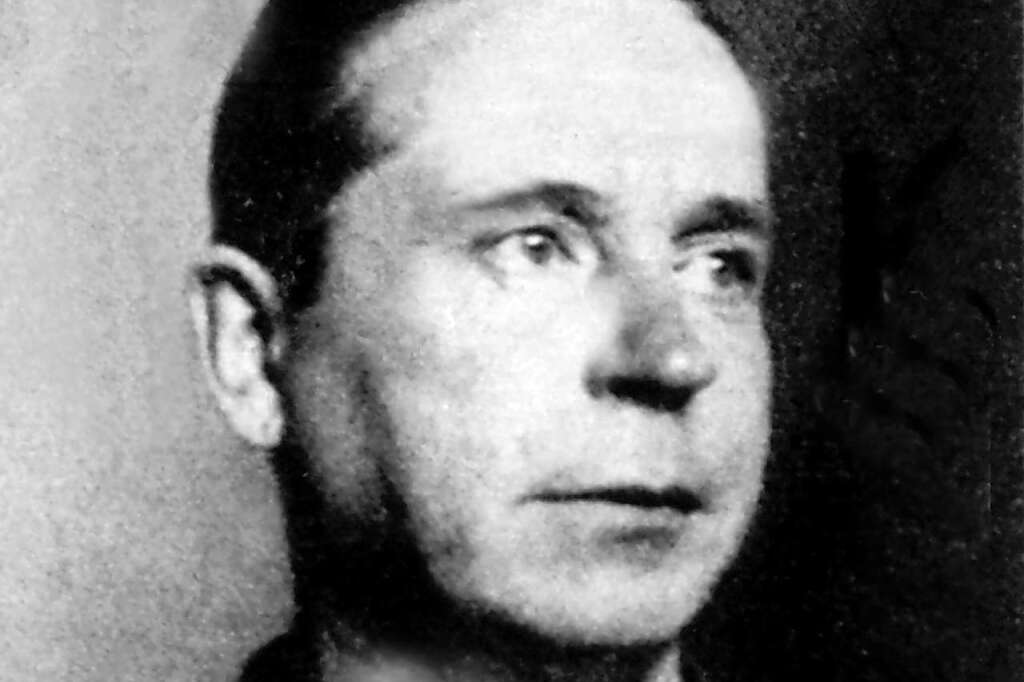The serial killer Peter Kürten was executed 90 years ago. In order to catch him, the police created the first psychological perpetrator profile in German criminal history.
Five years ago he was still able to provide precise information about his uncanny encounter with the criminal of the century: “I was paralyzed,” recalled Hermann Mühlemeyer. He was eight years old when in July 1929 he suddenly came across Peter Kürten on a dirt road in the south of Düsseldorf.
The series of murders of the serial killer Kürten (1883-1931), who murdered at least nine people and tried around 40 others, is considered the most spectacular criminal case in the Weimar Republic. Ninety years ago, on July 2, 1931, early in the morning the guillotine fell on the Kürten, who had been sentenced to death. The executioner had come specially from Magdeburg.
A friend saved him from the serial killer
Mühlemeyer, who died in 2019, was probably the last survivor of the “Vampire of Düsseldorf”. The Kürten, dressed in an elegant suit, stopped in front of him on a dirt road with a bicycle, drew a long knife and said to him in a very friendly tone: “Now I want to cut your neck off.”
His friend Werner saved his life by shouting: “Hermann, run onto the embankment. The railway police are coming over there.” The white lie worked: The then most wanted criminal far and wide jumped on his bike and piled as fast as he could. After the arrest, Mühlemeyer reported that he recognized the severely parted Kürten in the newspaper photos. “If it hadn’t been for Werner, he would have ruined me.”
The series of murders becomes the basis for the film
1929 is the year in which Kürten gets into a blood frenzy, commits eight of his nine murders as well as a series of assaults and attempted murders with which he puts the population of the Weimar Republic into hysteria. Director Fritz Lang quickly takes up the case in his legendary film: “M – A city is looking for a murderer”.
Kürten was given the nickname “Vampire of Düsseldorf” because, as the files show, he is said to have drunk the blood of several of his victims. Kürten killed a young swan early on in the Düsseldorf court garden and drank its blood, reports Hanno Parmentier, historian and Kürten expert. “Blood plays an enormous role in Kürten – it triggered sexual experiences in him.”
Parmentier has not let go of the Kürten case since studying the 222 bundles of files from the police and court in the North Rhine-Westphalia State Archives. He was at the crime scenes, traced the paths of the serial killer in and around Düsseldorf, for example in the Rotthauser Bachtal, where he stabbed and buried the young Maria Hahn with scissors. In his vanity he even sent letters to the police and newspapers with a sketch and the marked place where he had buried her body.
A childhood full of violence
For criminal psychologist Lydia Benecke, Kürten was not just a dangerous sexual sadist and psychopath. With him there was a strong urge to kill people. Kürten even dreamed of killing large crowds. With such severely disturbed offenders, abuse can typically be found in childhood and adolescence, reports Benecke. In order to become a serial killer, other biological and other factors would have to be added.
Kürten’s father was a violent alcoholic. He beat Kürten’s mother and 13 siblings, and committed sexual assault on a daughter. Little Peter not only experiences his brutal father, but also watches his neighbor, an animal catcher and skinner, soon feels his desire to kill, starts dozens of fires.
Kürten became a habitual criminal at an early age and spent almost half his life behind bars. He committed his first documented murder in 1913 on nine-year-old Christine Klein. Previously, as a child, he is said to have pushed two other children into the Rhine and watched them drown. That is not guaranteed.
The first perpetrator profile in German criminal history
The police are under enormous pressure and are developing innovative methods: They even create a perpetrator profile of the “Phantom of Düsseldorf” – it is the first in German criminal history. A forerunner of the computer search actually put Kürten on a list of the police, but his neighbors assure that the nice, inconspicuous gentleman could never be a serial killer.
For a long time the investigators grope in the dark, can only imagine the murderers in quick succession as “madmen” and search for the “vampire” in mental hospitals. Two women who survived Kürten’s attacks finally identify him.
Kürten’s wife finally betrays him
Then the police make a capital mistake, reports Parmentier: They sent Kürten a summons for questioning. He’s been warned and goes underground. The officers only find his wife in his apartment. But she does not stand up to the interrogations and tells the police that she is about to meet her husband at the Rochus Church in Düsseldorf. It was there that Kürten was arrested and confessed.
He presents his deeds as revenge on society: He wanted to demonstrate that the prison does not make people better, but even worse. In fact, he probably murdered for a different reason: Several psychiatrists like Karl Berg classify Kürten as a sadist. Before his execution he asks the psychiatrist Franz Sioli: “Is it possible that you can hear your own blood rushing at the moment of your death?”
–


